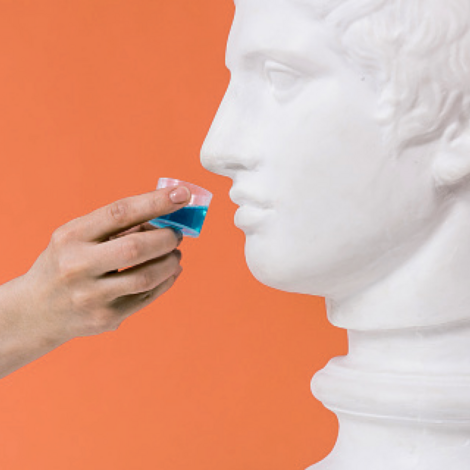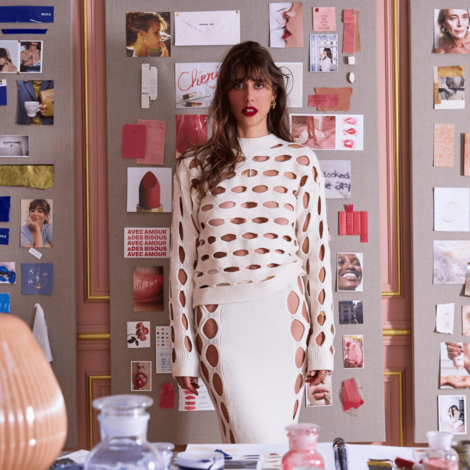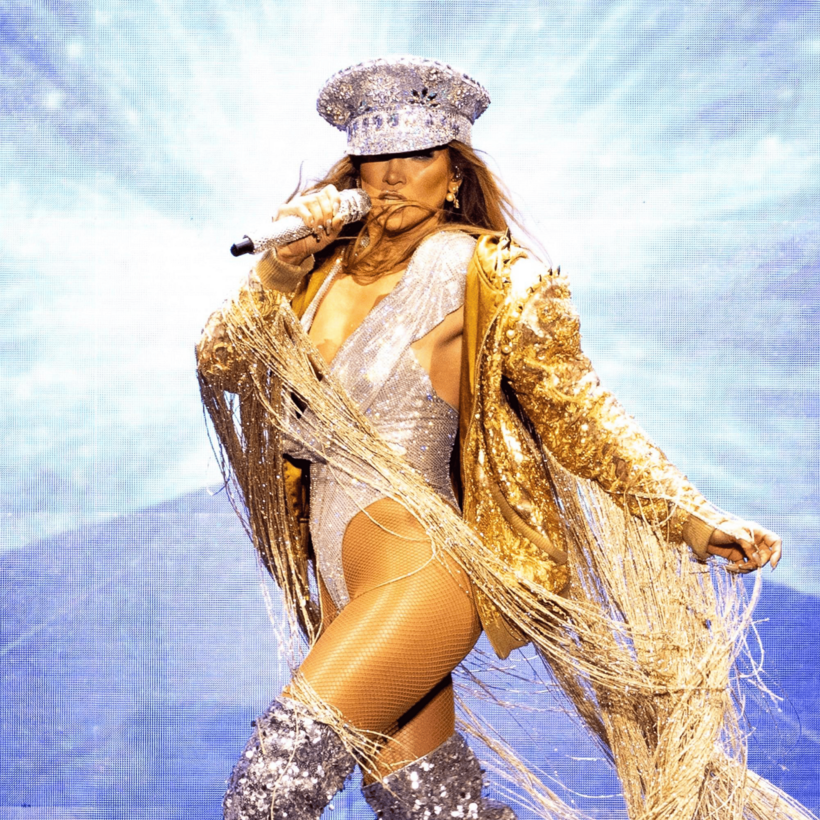Swarms of fans stormed Target stores across the country at midnight to buy Taylor Swift’s new limited-edition CD and vinyl, “The Life of a Showgirl”. It’s rendered in a shade Swift calls “summertime spritz pink shimmer,” an adjective-heavy palette that also extends to her wardrobe, the creation of David and Phillipe Blond.
Partners in both love and work for more than two decades, The Blonds are the bedazzling masterminds behind the modern showgirl, including two of Swift’s six album-cover looks and racy stage costumes for Beyoncé, Lady Gaga, BlackPink, Chappell Roan, and Jennifer Lopez.
“Few people can wear those landing strips,” said a fashion archivist, with a raised brow, after The Blonds’ runway show last month. A reporter said that she’d overheard the models backstage discussing who had “waxed and shaved” their nether regions before going on the catwalk.
This isn’t the first time David and Phillipe have stitched risqué into their seams. In fact, doing so is their signature. But it didn’t start that way. In 2006, after toying with T-shirts and denim, The Blonds took the advice of the costume designer for Sex and the City, Patricia Fields, to turn the corsets they designed for their friends, including Fields, into a commercial collection.
And then Beyoncé called. Well, her longtime stylist, Ty Hunter, did. “We were losing our minds,” says David. “It was the most amazing thing in the world … after years of fantasizing about these pieces and who would wear them.”
They describe the crystal corset Beyoncé wore in her “Upgrade U” music video in 2006 as “the center of our DNA. We base everything on that particular garment,” says David.
Inspired by burlesque, David and Phillipe’s creations have grown more daring over the years. In 2013, they constructed a bodysuit for Beyoncé with protruding breasts and erect nipples glazed in crystallized honey.
Phillipe hand-painted the power mesh suit onto Beyoncé’s body, then it was hand-embroidered with approximately 30,000 crystals over 600 hours. A Vanity Fair headline afterward announced, “President Obama Distances Himself from Beyoncé Two Days After She Dons Controversial, Anatomically Correct Sequin Suit.” Later reports explained that Obama distanced himself not because of the outfit but because she and Jay Z had traveled to Cuba. The suit, however, was very much anatomically correct.
That same year, fresh off the nipple hubbub, The Blonds dressed Miley Cyrus in a bejeweled marijuana leaf print for her breakout Bangerz tour in 2014 that marked her metamorphosis from Disney Channel sweetheart to twerking provocateur.
Beyond all the sparkle, The Blonds’ magic lies in the way their costumes, with their skimpy bottoms and plunging tops, manage to stay firmly in place as the performers twist, turn, grind, and sweat on stage. When pressed on how they avoid a Janet Jackson-level Super Bowl slip (when Justin Timberlake tore off part of her bustier to reveal her breast), David refrains from revealing all his secrets. “One of our favorite things to utilize is silicone,” he says. “It almost creates a second skin for the artist, and that way they have the freedom to just do what they’re doing without worrying if something’s going to slip or move.” They insert silicone cutlets or sheets into the garments, which turn the fabric into its own adhesive. That’s how even their skinny “landing strip” thongs manage to stay where they belong.
They rarely use latex—save for a swimwear-like collection that made it into Gwen Stefani’s 2018-2021 Las Vegas residency—and never go anywhere near rubber. That’s because “rubber is not breathable,” David explains, “and it’s almost virtually impossible to crystallize.” Instead, they turn to moisture-wicking fabrics. For extra ventilation, they’ll sometimes add discreet slits in the underarms. “We try to mask those things with either a stretch tulle or some type of jumbo mesh, or something that will put a layer between the body and the actual garment so that air, oxygen, and debris can circulate.”
David says each garment is customized to the artist. “Some clients prefer to have a lot more structure and a lot more stiffness to the costumes.” That preference dictates the first step: the spiral metal boning, which forms the base of the corset. “Essentially, it gives enough flexibility so that it can mold to the body, but at the same time maintain the structure,” he explains.
They layer crystals, embroidery, and embellishments on top of that. Perhaps most crucially, David says, “You’ve got to take into consideration the balance, the proportion, and the weight that goes into each piece, especially when you’re dancing. You have to make sure that something not only fits but can withstand everything.”
Lopez is one of their most choreographed performers—a surprise, considering her costumes often resemble two Vs mirroring each other and daring the same question as the limbo: How low can you go? Answer, apparently: very.
“She usually has multiple fittings,” David says. “And she does everything from lifts to flips, so we have to think about every inch of the piece—how much tension is in each area, how the edges are reinforced.”
The last challenge isn’t wearing the costumes but removing them. “It’s something that needs to be practiced over and over again,” says David. “When these things are being put on and ripped off quickly, they need to stay together.” Each artist has a team charged with undressing them.
The costumes are cleaned by couture specialists, sometimes with Q-tips to polish the crystals one by one. The Blonds make multiple copies of the same garment—three on average, and as many as six if the piece is especially delicate. If a tour is suddenly extended, they expect a frantic last-minute call for more duplicates.
Some “civilians,” as David calls them, dare to wear their pieces. Chief among them is Daphne Guinness, the English musician, fashion designer, and heiress. “She’ll walk around in a fully mirrored, crystallized cat suit. It’s just normal for her,” David says.
The Blonds are dedicated to the showgirls and the Showgirl, on and off stage. They believe their designs are “meant to be a vehicle for storytelling,” says David, and that clearly speaks to the Swifties, with their skill at dissecting lyrics and analyzing song titles. Her fans are already looking for clues among the sequins.
Carolina de Armas is a Junior Editor at air mail





